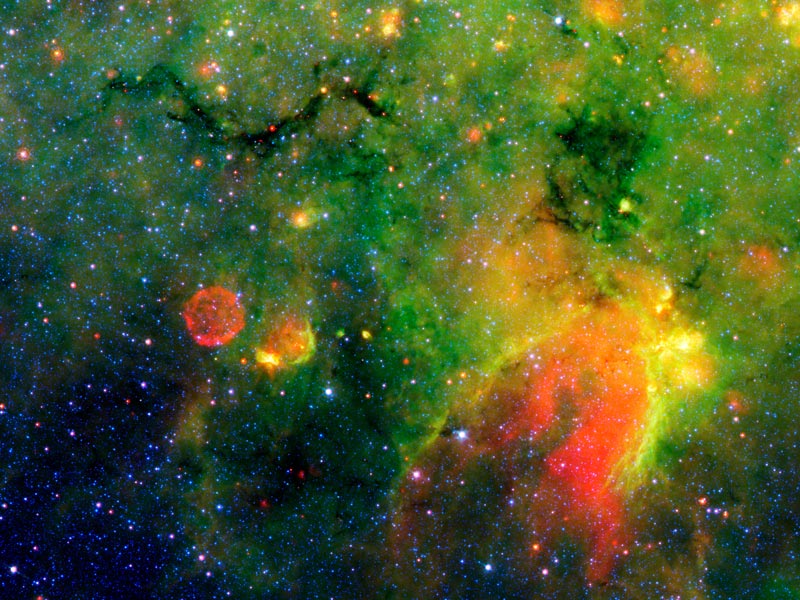Explanation: How do stars form? To help study this complex issue, astronomers took a deep image in infrared light of an active part of our Milky Way Galaxy where star formation is rampant. In IRDC G11.11-0.11, thick clouds of dust and gas are congealing into stars that are so dark that humans living there would see an empty night sky. The image, though, taken last year by the Spitzer Space Telescope in infrared light, shows vast glowing fields of gas and dust, indicating that much of this dust is heated by forming stars. The centers of some clouds, such as the snake-like structure on the upper left, are so thick and cold that they are dark even in infrared light. Many of the red dots are glowing dust shrouds centered on very young newly formed stars. The unusual red sphere below the snake is actually a supernova remnant, the glowing shell of a young star so massive it evolved rapidly and exploded. The region spans about 150 light years and lies about 10,000 light years away toward the constellation of Sagittarius.
APOD editor to review best
space pictures in Philadelphia Wednesday night
1999 2000 2001 2002 2003 2004 2005 2006 2007 2008 2009 2010 2011 2012 2013 2014 2015 2016 2017 2018 2019 2020 2021 2022 2023 2024 2025 |
Январь Февраль Март Апрель Май Июнь Июль Август Сентябрь Октябрь Ноябрь Декабрь |
NASA Web Site Statements, Warnings, and Disclaimers
NASA Official: Jay Norris. Specific rights apply.
A service of: LHEA at NASA / GSFC
& Michigan Tech. U.
|
Публикации с ключевыми словами:
star formation - infrared - звездообразование - инфракрасное излучение
Публикации со словами: star formation - infrared - звездообразование - инфракрасное излучение | |
См. также:
Все публикации на ту же тему >> | |
